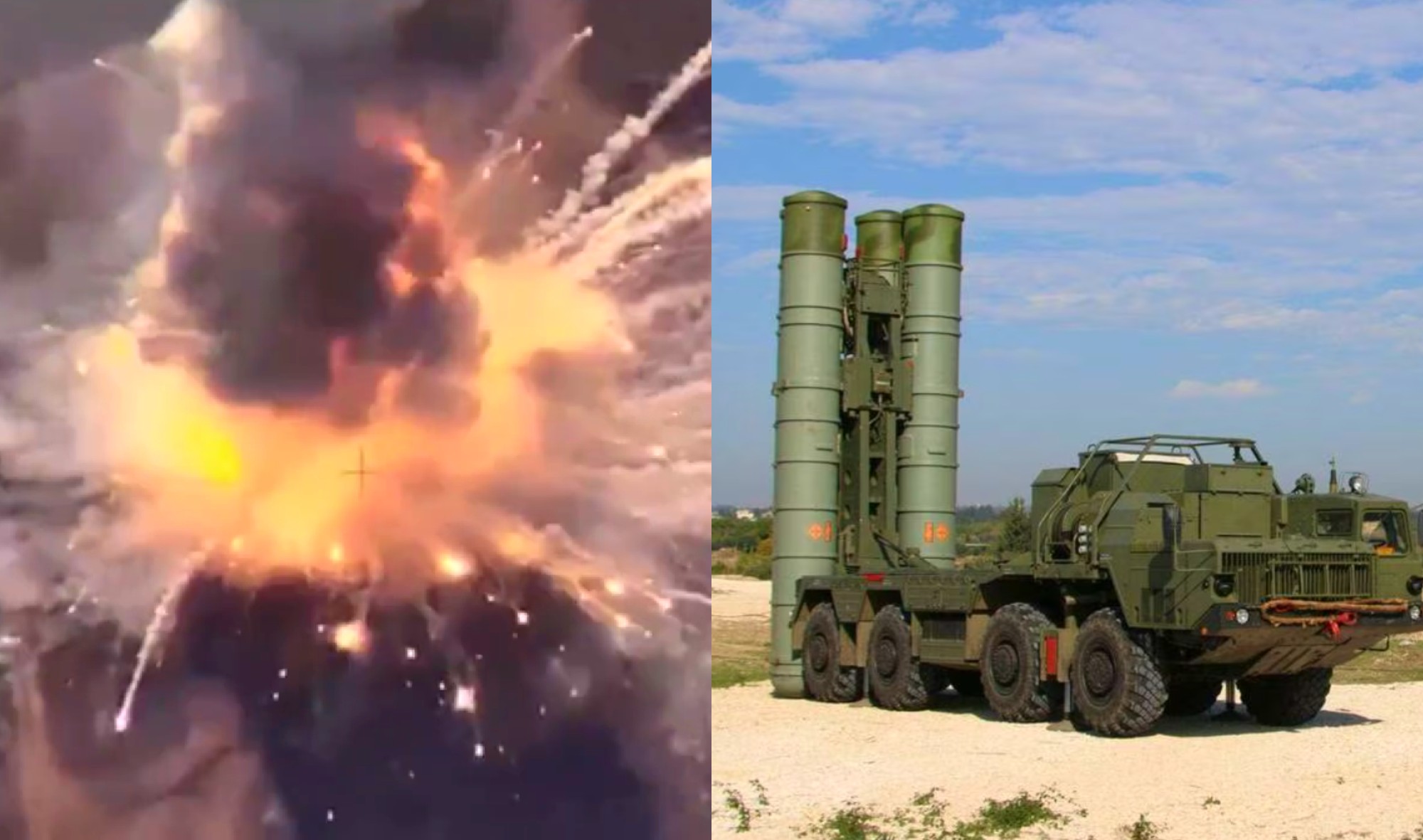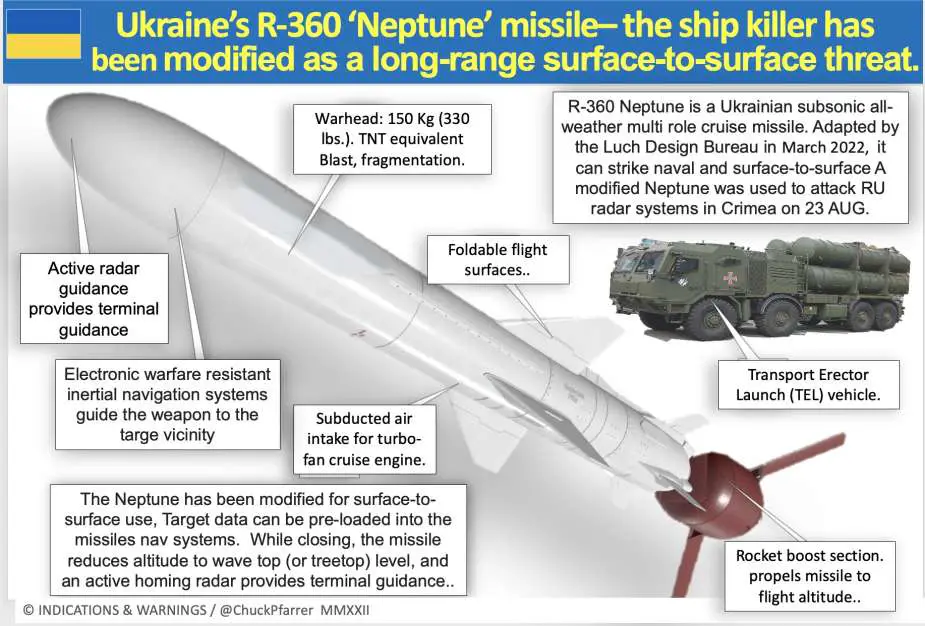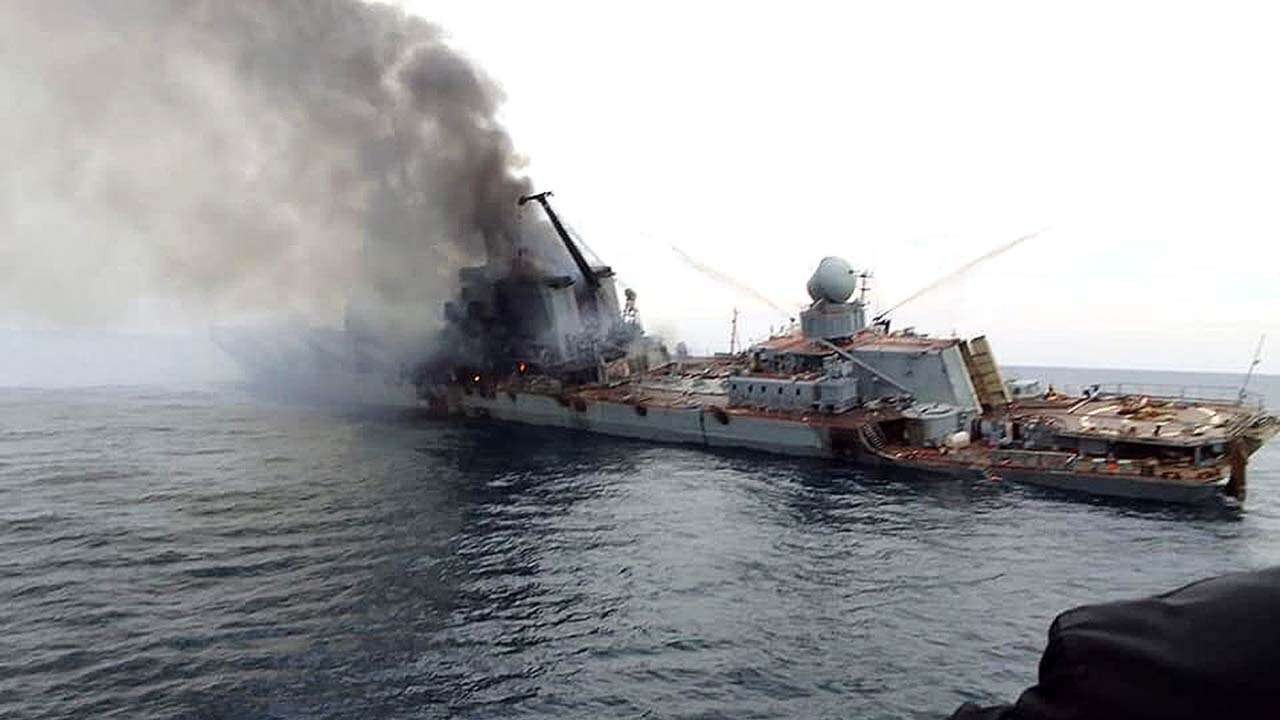As Russian troops in Crimea continue to be hounded by Ukraine’s aerial onslaught, officials in the Armed Forces of Ukraine (AFU) have confirmed that they targeted the Russian Triumf surface-to-air missile system stationed in Crimea.
The announcement followed the reports of blasts that caused a frenzy among the Russian troops. AFU’s strategic communications directorate said in a Telegram post: “In the morning, the Armed Forces of Ukraine struck at the location of the enemy missile “surface-to-air” systems near Yevpatoriya in temporarily occupied Crimea.”
Reports indicated that overnight explosions were recorded in Yevpatoriya as part of a special operation jointly by Ukraine’s SBU Security Service and the Ukrainian Navy. Later, some sources from the secret security services told Ukrainian media that a Russian Triumf anti-aircraft missile system was destroyed in the operation.
The attack was allegedly carried out in tandem by the drones and the Neptune cruise missiles. According to the incoming preliminary reports, the complex’s radar and antennas were first disabled by SBU drones, following which naval forces fired at least two Neptune missiles to obliterate the designated target.
“First, the SBU drones hit the ‘eyes’ of the complex – radars and antennas, and after disabling the radar stations of the Navy units, two Neptune cruise missiles hit the S300/400 Triumf launch complexes,” Interfax-Ukraine reported, citing an SBU source.
⚡️Video of the destruction of the 🇷🇺Russian S-400 "Triumph" air defense system in Yevpatoria on the Crimean Peninsula this night
The anti-ship missile "Neptune" was probably used for the strike pic.twitter.com/Oaiuj5MUmi
— 🇺🇦Ukrainian Front (@front_ukrainian) September 14, 2023
EurAsian Times could not independently verify the details published by Ukrainian media. There is no official word from the Russian government either.
However, a spate of attacks has recently rocked Crimea, barely allowing any breather to the Russian troops caught on the back foot in Crimea. All the attacks on Crimea are aimed at isolating it from the rest of Russia to make the use of this peninsula untenable. Crimea was occupied by Russia in 2014.
If the latest information is authenticated, this attack is significant. It comes right after Ukrainian forces launched a daring and massive missile strike on a strategic Russian naval shipyard in the Black Sea port of Sevastopol in Crimea, damaging two Russian vessels. This strike was conducted using the long-range Storm Shadow/SCALP EG missiles.
However, experts have noted that Ukraine has also been employing a new modified variant of the Neptune cruise missile to strike targets inside Crimea. These missiles use infrared imaging with scene or imaging matching for terminal homing and have made Moscow’s troops adopt some peculiar measures to keep them at bay.
While Ukraine continues to launch missiles and drones on Russia’s strategic assets and catch it off-guard, Neptune has become particularly popular. In the face of long-range and lethal missiles delivered to the AFU by NATO countries, the homegrown Neptune has managed to trigger panic in the Russian troops.
The Rising Popularity Of Neptune
Although the recent attack is sure to cause ripples worldwide as it took out an expensive Russian air defense complex, it is not the first time the missile has achieved that feat. Last month, the Neptune missile attacked an S-400 Triumf deployed at Cape Tarkhankut in Crimea.
In the first such incident, prominent Ukrainian journalist Yuriy Butusov reported that the strike was executed using an R-360 Neptune anti-ship missile, modified to serve in a land-attack capacity, aiming for the S-400 air defense battery.
At the time, the Secretary of the National Security and Defense Council of Ukraine, Oleksiy Danilov, announced that a new Ukrainian missile had executed its task “flawlessly.” The new missile refers to a land-attack variant of the Neptune anti-ship missiles recently produced and deployed by Ukraine.

The loss of the S-400 at the hands of the Neptune missile is significant as the S-400 in Russia has managed to remain secure and functional as opposed to other weapon systems that have been, throughout the protracted conflict, playing an essential role in defending critical Russian military infrastructure and facilities.
Ukraine is advancing its indigenous long-range strike capabilities in light of limitations on using donated weaponry against targets beyond its borders. Although precise details about the land-attack variant remain shrouded in secrecy, EurAsian Times noted that the Neptune operates at a low altitude and subsonic speed, making it suitable for adding land-attack capability.

Presumably, Ukraine has tweaked the missile’s guidance and target seeker systems in the nose section. Usually, anti-ship missiles have Radio Frequency (RF) and Infrared (IR) seekers, while land-attack missiles like air-to-ground munitions (AGM) often have optical seekers. However, the exact nature of alterations to the missile’s guidance, navigation, and propulsion system are not unknown.
However, the most iconic target of the Neptune cruise missile remains the Russian cruiser Moskva, the destruction of which marked the first combat breakthrough achieved by Ukraine early on in the conflict. The Ukrainian military later asserted that the missile was carried out independently, without external help from its partners in the West.

On August 27, journalist Natalia Moseychuk spoke with Zelensky about the developing defense industrial base in Ukraine and the rising interest from top technological companies to invest there. The interview was seen as the Ukrainian President’s hint regarding the rise of Neptune and the increase in its production.
“Ukraine currently produces Neptune, Stugna, and Corsair, and the volume of this production is growing significantly. It’s just enormous numbers at the front, constantly in need, that our servicemen approve, and they want even more, but you can’t even imagine how many we are producing. It’s a big, huge number,” Zelensky said.
However, two days later, Russia was able to carry out the first-ever interception of the Neptune missile. Russia did not share any information regarding whether the Neptune missile they intercepted in the latest event was aimed at sea or land targets.
The spate of attacks that have employed the sea and ground-attack variant of the Neptune make one thing clear: the employment of this missile undeniably poses a substantial threat to Russian military installations positioned well within their territory.
- Contact the author at sakshi.tiwari9555 (at) gmail.com
- Follow EurAsian Times on Google News




